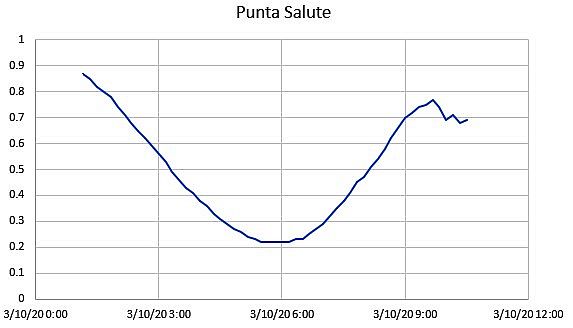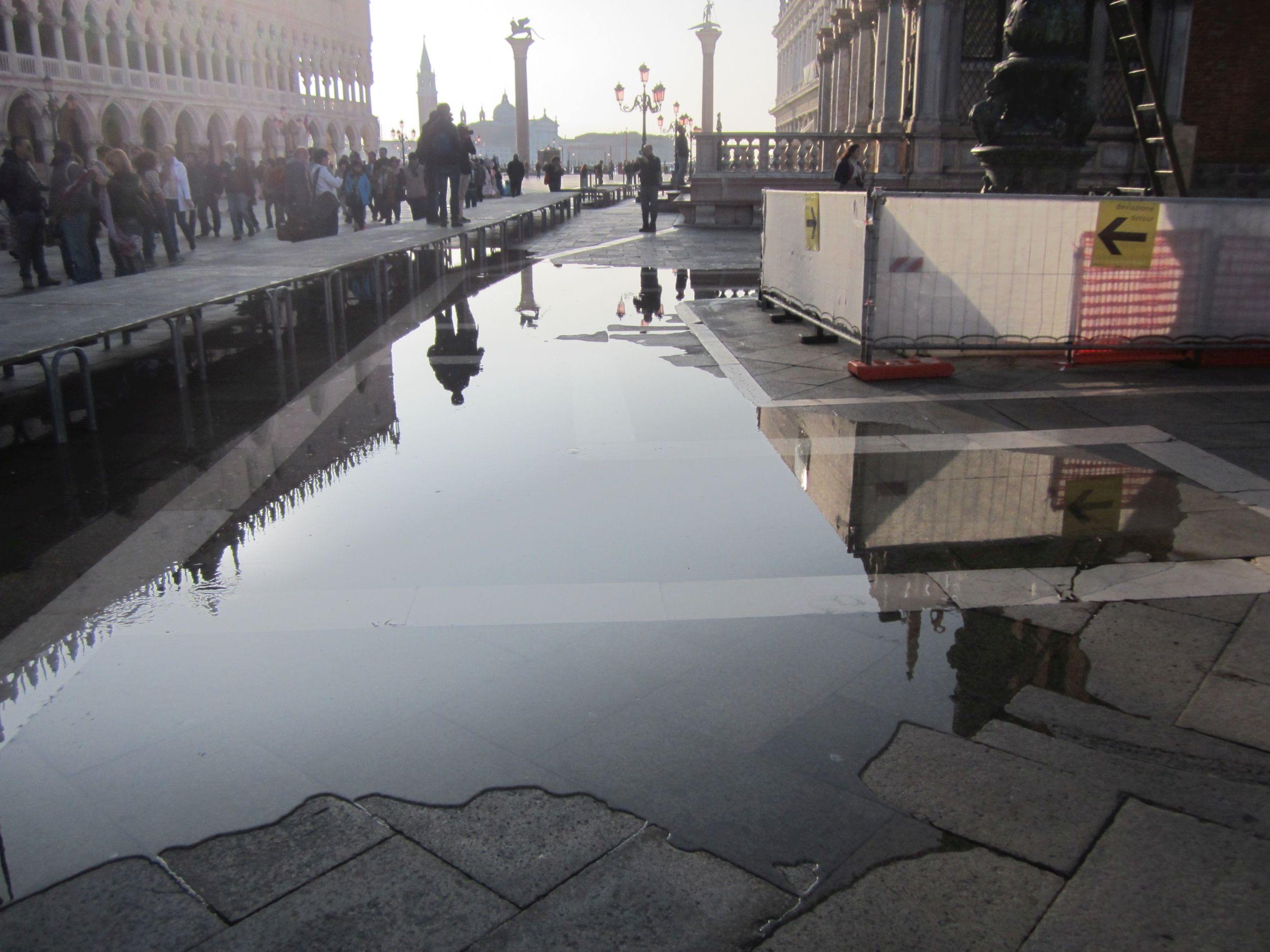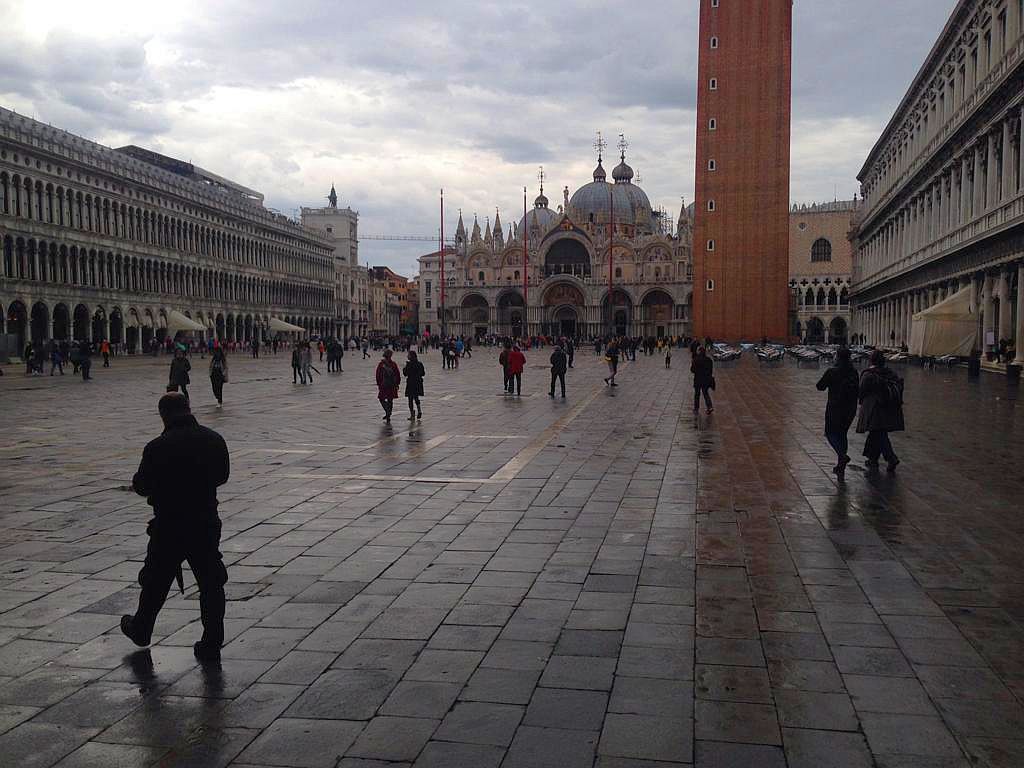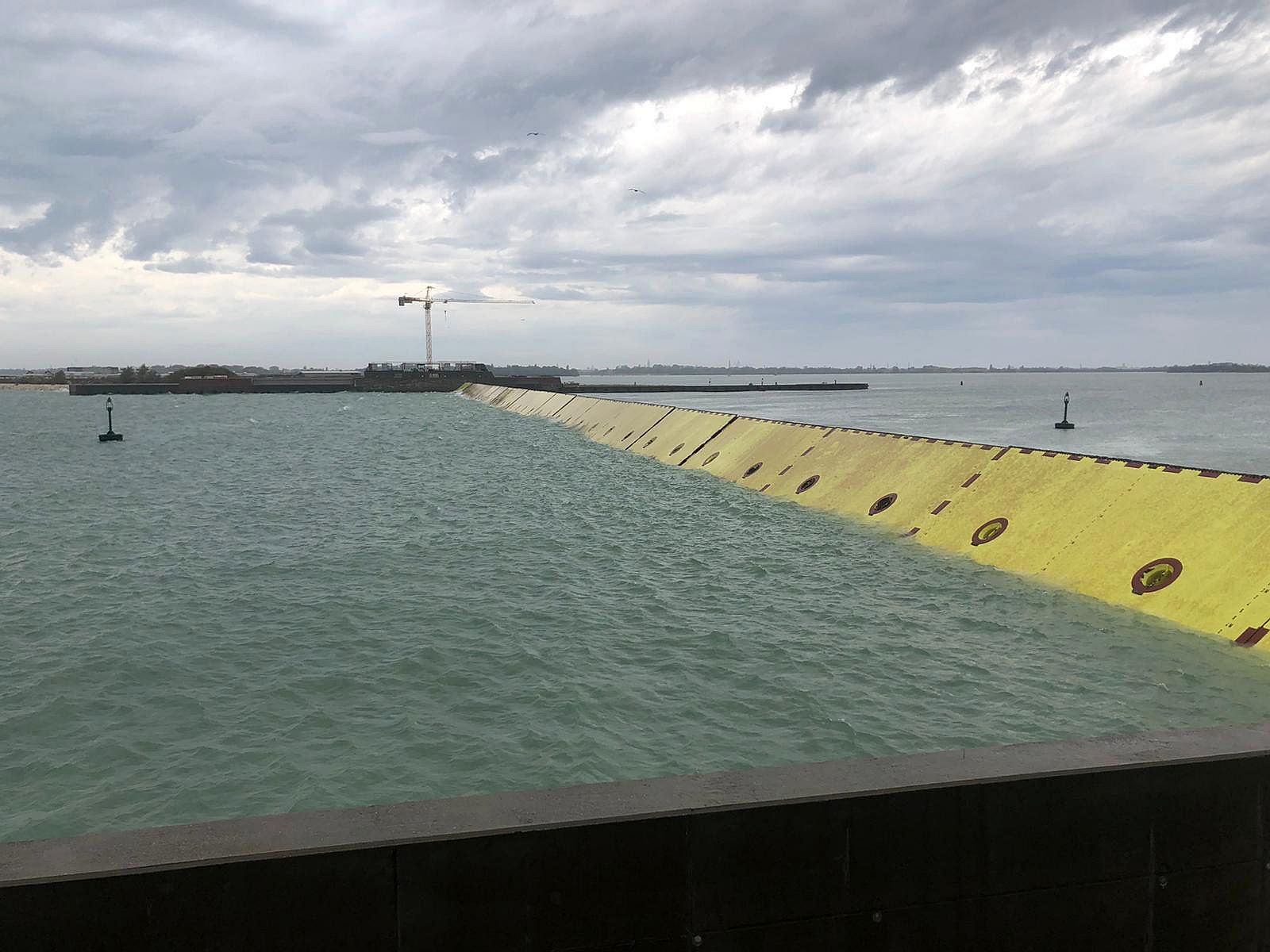I’m not going to lie: I never thought I’d see this day. Either it would never come, or by the time it did, I’d have long since turned into tera de bocal (clay for making chamberpots, as they put it here). But here we are, or more specifically, there it was this morning — the Adriatic to the right, the lagoon 70 cm lower to the left, and the vaunted MOSE floodgates ensuring for the first time that the twain shall never meet.
Years, decades, lifetimes have been devoted to constructing (and paying for) this thing, and I had little (in ErlaSpeak that means “no”) expectation that the gates would ever function. But they did. Allow me to doff my chapeau and say I’m not only astounded, but slightly weirded out. Because hearing three signals on the warning siren at 8:00 AM put all my nerves on high alert, even though we’re not in danger till four signals warn us of the possibility of the tide’s exceeding our personal domestic ground-level safe limit of 150 cm. Instead: Nothing.
I think everybody’s nerves have been a little tense, after two days of forecasts predicting an acqua alta to peak today at 135 cm above mean sea level at 12:05 PM. But at 9:00 AM (and at a mere 70 cm of rising tide) it was instead the long-discussed, -doubted, -reviled floodgates that rose, and stopped the sea at whatever the watery analogy of “in its tracks” may be. At the measuring station at the Diga Sud of the Lido the tide was at 119 cm, but the water at the Punta della Salute — bacino of San Marco, basically — was at 69 cm. When the tide turned, just after noon, it had reached 129 cm, but in the city was only a paltry 73.

We went outside to look at our canal. The water wasn’t moving. A lost pear, fallen from the fruit/vegetable boat upstream, was bobbing tranquilly in one place when it ought long since to have been carried off by the rising (or, by then, falling) tide.
Even on a normal day, the water in the canal is almost always moving at some speed, in some direction; only briefly, twice a month, does the tide pause in what is called the morte de aqua (“death of the water”). But here it was, stock still. It might as well have been in the bathtub. And so it remained until some time after the Adriatic began to withdraw; I suppose that didn’t need to be said, but perhaps someone other than myself might have forgotten that you wouldn’t lower the barrier until the sea was at least even with the level of water in the lagoon.
I didn’t used to think of 135 cm as anything more than “God, this is annoying.” But I think it’s fair to say that the doomsday inundation of November 11-12, 2019 is still too screamingly fresh in everybody’s mind to allow the casual return of “Sure, this is Venice, what do you expect?” Any tide above normal now appears potentially apocalyptic. And if our nerves were slightly on edge, so were those of the hopeful travelers who had booked hotel rooms and then, having heard early mentions of the dreaded words “acqua alta,” quickly canceled the reservations.
That’s too bad, because they missed a verifiably historic moment. And I’m glad I was here to see that pear not going anywhere in our canal.
The breakwater at San Nicolo’ on the Lido was an excellent spot for watching this epic event. This clip gives a sense of the force of the wind, always a crucial player on Team Flood Venice. This morning it was up to 41 kph (25 mph).
In case the still photograph above doesn’t convey the dynamic of what’s happening, this video from Corriere della Sera (particularly at the beginning and end of the clip) gives a glimpse of the force of the tide, as seen against the barriers as they rise, one by one. Fun fact: It took one hour and 17 minutes to raise all 78 of the gates, so the process obviously needs to start in a timely manner and not wait till the last OMG minute.


Note: Two videos, and all of the images with the exception of the water in the Piazza San Marco, were forwarded to me by friends via WhatsApp, so I am unable to give appropriate credit to their sources.

